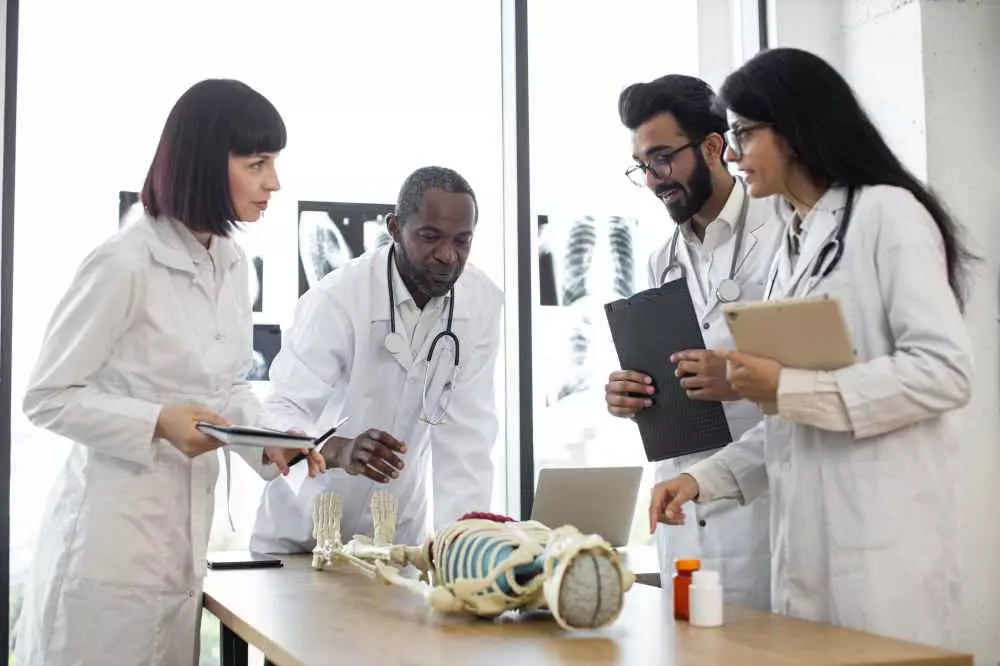Introduction to anatomy education
Anatomy education plays a key role in educating future medical and life science professionals. The rise of technology, changing educational trends, and the diversity of students' needs pose numerous challenges for educators. Modern anatomical education must adapt to a rapidly developing world and a growing interest in health and medicine.
The role of technology in anatomy education
In recent years, technology has revolutionized the way we learn anatomy. Virtual piggies, medical simulators and educational apps have become commonplace, offering students interactive learning methods. By looking at technology as a tool that enhances traditional teaching, teachers can more easily engage students and increase their interest in the subject.
However, the use of technology in anatomy education requires a range of skills for teachers to effectively implement new tools in the curriculum. Training staff to make the best use of these modern educational resources is crucial.
Adapting to individual students' needs
Every student has his or her own unique ways of acquiring knowledge. Therefore, an important challenge for educators is to adapt the material to individual students' needs. Teaching methods should range from lectures to interactive group sessions to meet each student's needs.
Teachers must also take into account diverse learning styles, which can affect the effectiveness of knowledge acquisition. Preparing lessons that take into account differences in students' abilities and interests can be time-consuming, but is essential for success in anatomy education.
Contemporary pedagogical approaches
In the age of the information society, traditional teaching methods are gradually being replaced by new approaches, such as experiential learning and project-based learning. These innovative methods encourage students to actively participate in class and acquire knowledge through practice, which is particularly important in the context of anatomy, where understanding the structure of the body is crucial.
Incorporating elements such as workshops or simulations into curricula is a valuable addition to standard lectures. Students learn better and faster when they can see and touch what they are learning.
The importance of interdisciplinarity
Modern anatomy education cannot be separated from other scientific disciplines. An interdisciplinary approach makes it possible to combine knowledge from anatomy with biology, chemistry, psychology and other natural sciences. This gives students a more complete picture of how the human body functions and the applications of this knowledge in practice.
Teachers should collaborate with other specialists to create a coherent program that integrates different scientific disciplines and allows students to better understand the connections between them. Knowledge acquired in an integrated manner is often better absorbed and more remembered by students.
Scarcity of educational resources
One of the serious problems facing modern anatomy education is the shortage of educational resources. Many institutions struggle with a lack of equipment, such as anatomical models, slides, or access to VR technology. This state of affairs can affect the quality of teaching and the level of student interest.
To address these challenges, schools and universities should seek funding to develop educational infrastructure. Collaboration with external institutions, such as universities, foundations or professional organizations, can benefit from new resources and assistance in implementing innovative educational projects.
Summary
In conclusion, today's challenges in anatomy education are complex and multifaceted. They require teachers to be flexible, able to adapt their teaching methods and collaborate with other professionals. The implementation of appropriate technological tools, as well as an understanding of individual students' needs, will certainly contribute to the quality of education in this field.
As the world changes, it is essential that anatomy education adapt to the modern challenges we face. So that future professionals are well prepared to deal with the demands of the labor market and the needs of patients in the context of health and medicine.
